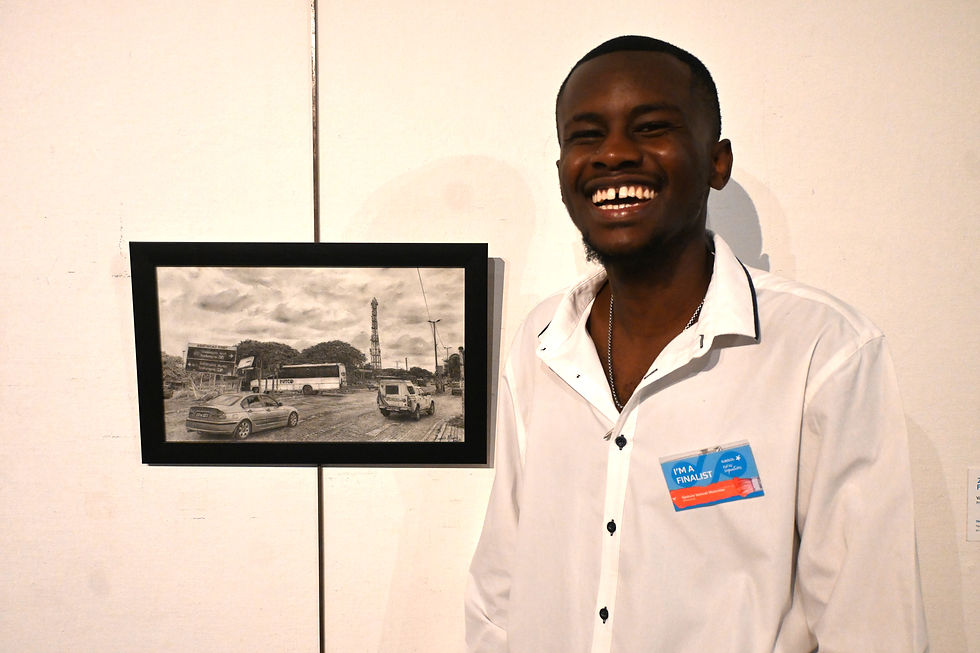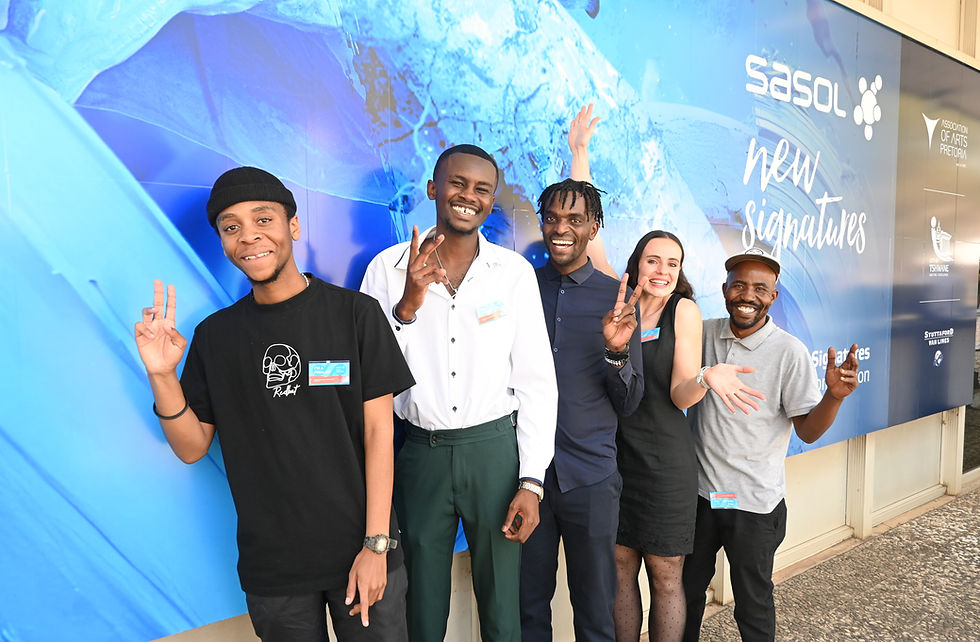TUT boasts five finalists with six works at Sasol New Signatures
- Gerrit Bester
- Sep 4
- 4 min read
by Gerrit Bester
The long-awaited winners’ announcement for this year’s Sasol New Signatures Visual Arts competition is finally here and the Tshwane University of Technology (TUT) couldn't be prouder to celebrate five extraordinary finalists (one boasting two works) standing tall in South Africa’s oldest and most cherished art competition.
Viola Greyling (alum and part-time lecturer), Sello Letswalo (alum), Wisani Manyisi (alum), and current students Spesihle Hlatswayo and Njabulo Molombo have work exhibited at the Pretoria Art Museum, where the award ceremony took place on Wednesday, 3 September.
They all represent the Faculty of Arts and Design’s Department of Fine and Studio Arts.
Another TUT link to the competition is Pfunzo Sidogi, Assistant Dean: Postgraduate Studies, Research & Innovation at the Faculty of Arts and Design, who serves as the National Chairperson of the competition.
It is the third time that Greyling has been among the prestigious Top 100 circle.
Greyling’s work, Suspending and evolving, consists of ceramic sculptures which are inspired by the natural formations of stalagmites and stalactites, drawing on the language of caves as spaces of memory, emergence and introspection. “These organic forms echo a personal journey – one of returning, of searching for a sense of home after dislocation. They reflect an identity in motion: evolving, layering and adapting as it encounters new and familiar environments,” she says.
Letswalo boasts two works among the top 100. The first, a sculpture, Mplankara, is a celebration of the universal human impulse to create, adapt and find joy in the face of limitation. “At its heart lies the figure of a hybrid child – part human, part cow (my familial totem, kgomo) – riding a wooden go-kart crafted from resin, steel, rubber and nylon rope. This work bridges personal memory and collective experience, exploring how play becomes a language of resilience across cultures,” he says.
His second work on exhibition is Mapantsula, which was purchased by Sasol and will become part of the Sasol Art Collection, one of the largest corporate art collections in South Africa. The work on steel is a visual tribute to the spirit of township street culture – its energy, rhythm and resistance. “Inspired by the Mapantsula movement, I use painting as a way to engage with a culture I deeply admire but express differently: I can’t dance, but I can translate its essence into visual form.”
Manyisi’s work, Melody in solitude, is a mixed media painting on paper of a grand piano in an open landscape. As Manyisi reveals: “This work is inspired by the classical song The Swan (piano & cello), which struck me while alone in the studio after a long day, reminding me of time on my grandmother’s farm where I enjoyed being alone to reflect on the day.”
Hlatswayo’s work, Forgive the method, remember the love, was intricately executed with candle smoke on tissue paper. It explores the often unspoken complexity of childhood discipline, particularly within African households. “The image of a mother holding a belt and a child with its head lowered is not an endorsement of violence; it is a reflection of how discipline, though painful, was often a language of love passed down through generations,” he says.
Molombo’s entry of graphite on pencil is titled Soshanguve. The drawing is about capturing the heart of a township. It clearly depicts both speeding and slowing cars at the famous robots and a junction that further emphasises that one has entered Soshanguve. “The compact trees and road signs direct both onlookers and pathfinders to the depth of this famous location. Seen also on the move is the PUTCO bus and BMW old series car, thus acting as a reflection of workers on the move and individual car owners with style,” he says.
One can hear the buzz noise just by gazing at the work.
In congratulating the five finalists, a proud Sidogi, says: “The selection of these TUT students and alumni in the final round of the competition is a testament to the quality of the Fine and Applied Arts programme that the university offers.”
This year, 106 artworks (all featured in a glossy catalogue) were shortlisted from over 900 entries throughout South Africa.
The overall winner is Juandré van Eck from Gqeberha, with a ceramic artwork, Cycles of the mind, which emulates the rhythmic patterns of breath. He bagged R100 000 and the chance to host a solo exhibition during next year’s competition.
To read more about this year’s top works, visit: https://www.sasolsignatures.co.za/2025-finalists/, or better yet, visit the Pretoria Art Museum, corner of Francis Baard and Wessels Street, Arcadia, to see it for yourself.
The exhibition runs until 2 November.
PHOTO CAPTIONS:









